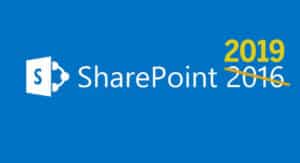 With the release of SharePoint Server 2019 in October, on-premises installations can now take advantage of SharePoint’s “Modern UI”. Microsoft developed the Modern UI as a responsive, more efficient alternative to the “Classic” SharePoint interface. While the Modern UI has been available in SharePoint Online/Office 365 for over a year, it is only with the SharePoint 2019 release that it comes to on-premises.
With the release of SharePoint Server 2019 in October, on-premises installations can now take advantage of SharePoint’s “Modern UI”. Microsoft developed the Modern UI as a responsive, more efficient alternative to the “Classic” SharePoint interface. While the Modern UI has been available in SharePoint Online/Office 365 for over a year, it is only with the SharePoint 2019 release that it comes to on-premises.
The Modern UI brings many benefits to SharePoint users. It allows the creation of compelling, attractive, easy-to-configure sites, is faster and more secure than the Classic interface, and is built from the ground up to be mobile-friendly and responsive.
The Modern UI improves the design, layout, and functionality of many SharePoint elements — Sites, Pages, Lists, and Libraries. It brings Hub Sites, Team Sites, and Communication Sites into play for on-premises users, moving SharePoint on-premises and online closer to parity, at least for the time-being.
Hub Sites, Team Sites, and Communication Sites allow for flatter and more flexible collaboration environments. Team and Communication sites can be created as needed and linked together through Hub Sites like spokes on a wheel. These arrangements can easily be reconfigured as business requirements change.
Other features for SharePoint 2019 point to further merging of on-premises and cloud. Upon the release, Microsoft Senior Technical Product Manager Bill Baer wrote that his company “paid close attention to trends in team collaboration, user experiences across devices, and how the cloud can be blended into existing on-premises scenarios in new and compelling ways.”
These efforts come across not only with the Modern UI, but also in how SharePoint 2019 can be deployed. In addition to the “traditional” on-premises installation, this new release can be deployed in these other ways:
- As a hosted service with Office 365 sites powered by SharePoint Online
- In Microsoft Azure Infrastructure as a Service (IaaS)
- As a mix of these options with a hybrid approach
This allows flexibility in how SharePoint 2019 fits into a larger SharePoint/IT structure. Some organizations are sticking with on-premises installations due to security and compliance needs, as well as the cost and effort of migrating to Office 365; other organizations are taking a hybrid approach, where SharePoint functionality that has to stay on-premises does, but other areas, such as administrative departments, are on Office 365. The goal in this case is to get the “best of both worlds”.
All in all, SharePoint 2019 is a promising release for the on-premises crowd.
Here are some links for more information:
